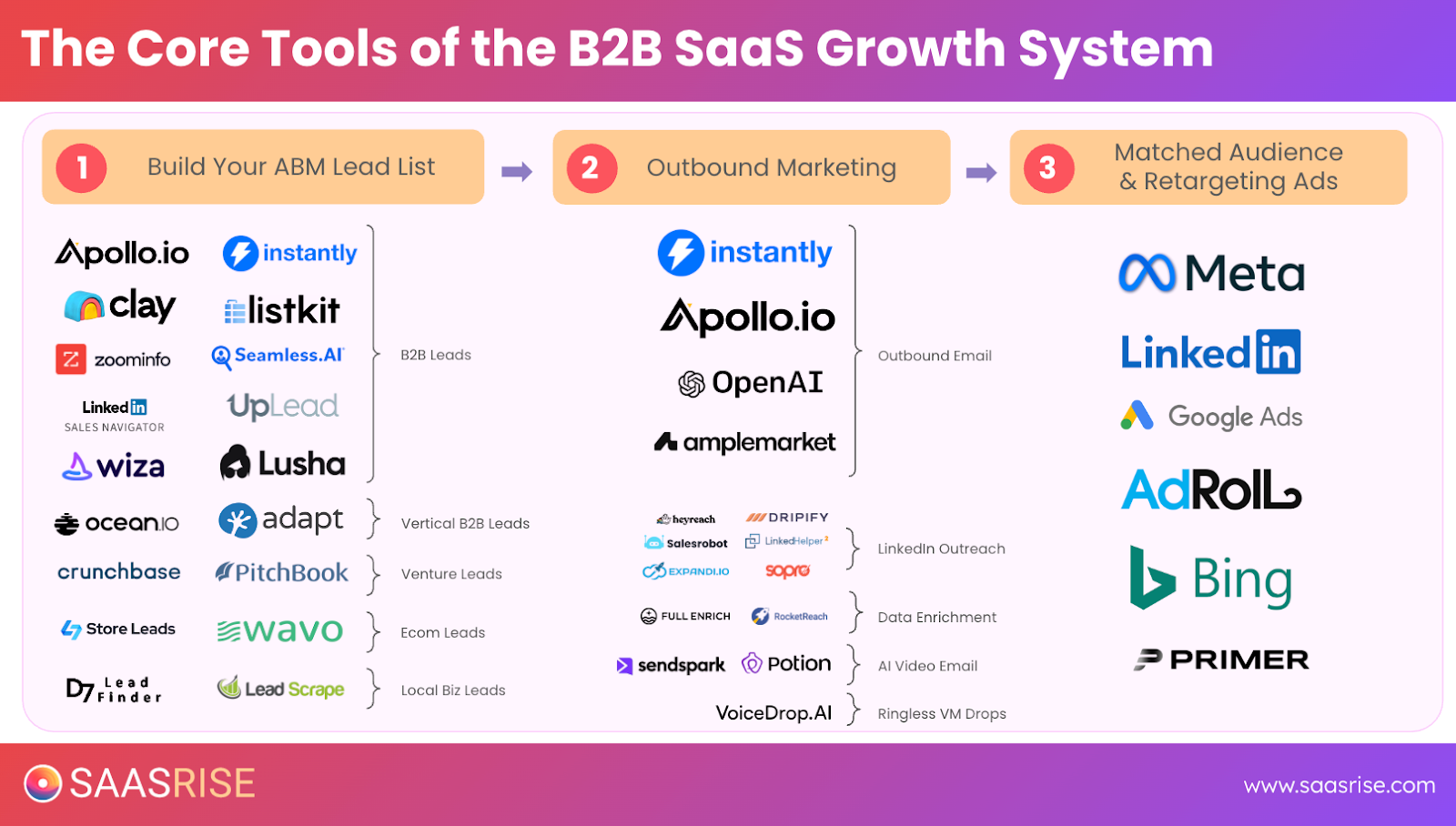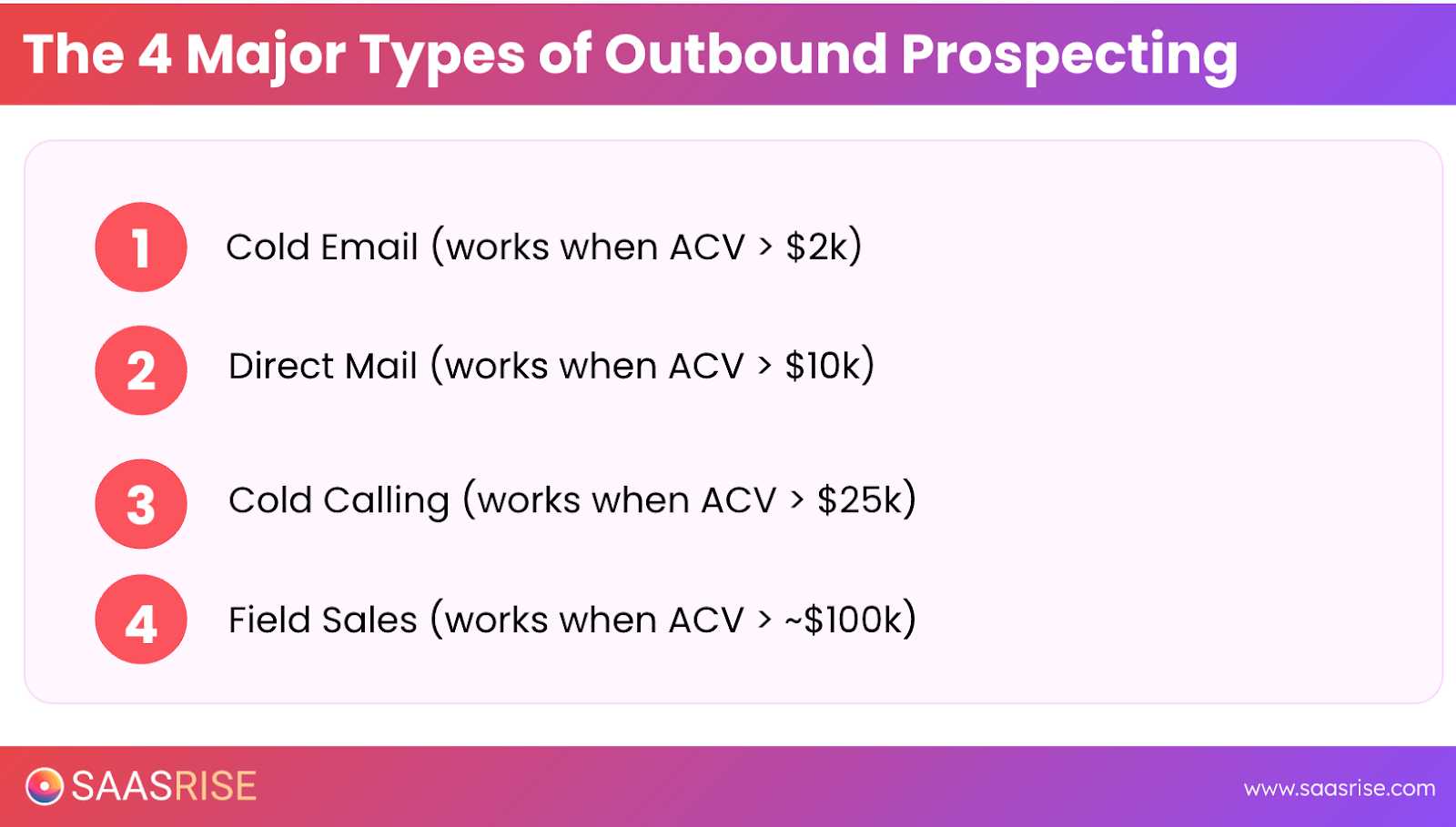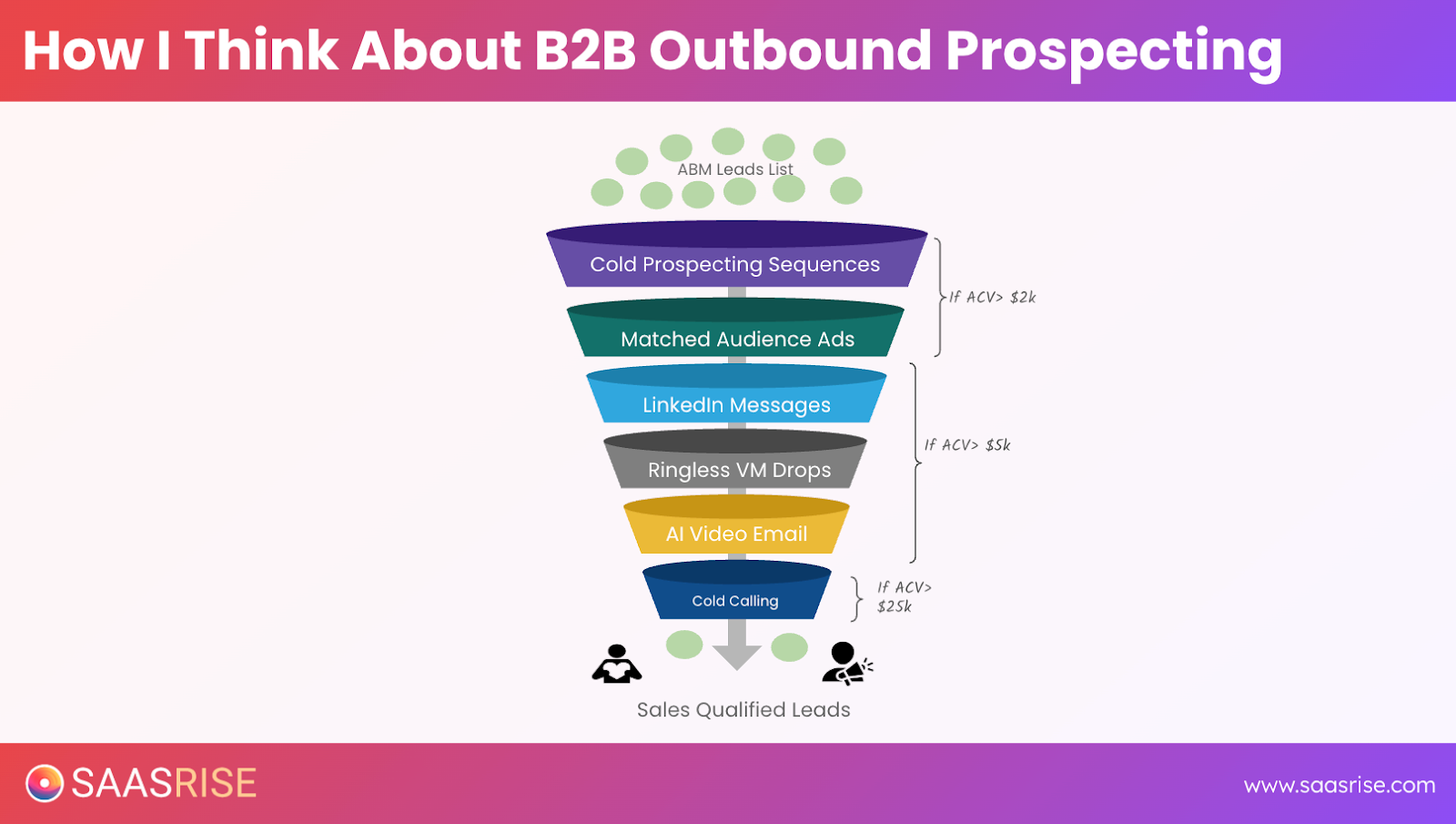
How to Use AI-Powered Outbound Email to Scale B2B Growth
If you’ve built your ABM list and started your content machine, you’ve already got the foundation. But now comes the most powerful — and misunderstood — piece of the modern B2B growth playbook: AI-personalized outbound email.
Let’s talk about outbound.
Done right, outbound can generate millions in the pipeline and help your brand dominate awareness inside your target market. Done wrong, it burns your domain reputation, floods inboxes with noise, and gets ignored.
The difference comes down to precision, relevance, and systemization.
Let’s walk through how to build a cold email system that scales — one that uses AI, automation, and great content to reach your audience in a human, personal, and effective way.
This content is from the 16 week B2B SaaS Growth Program that we run twice a year.
Why Outbound Is Still the Most Direct Growth Channel
Outbound gets a bad reputation because most people do it poorly. They spray generic messages to random contacts and then wonder why nothing works.
The truth is, outbound works exceptionally well when you combine three things:
- A well-defined ABM list (the right people)
- AI personalization (the right message)
- A thoughtful offer and cadence (the right timing)
When you layer in content and ads on top of outbound, you get what I call “air cover.” Your prospects don’t just get an email from you — they also see your brand in their feed, in retargeting ads, and in your content.

That’s how you go from being another cold email to becoming a recognized name.
Step 1: Make Sure Your ACV Justifies Outbound
Outbound isn’t for every business model.
If you’re selling a $50/month SaaS product, cold email probably won’t pencil out. It takes time, data, and infrastructure to run properly.
But if your annual contract value (ACV) is at least $2,000 — ideally $5,000 or more — outbound can be one of the highest-ROI channels in your growth system.
Outbound works best when:
- You sell to defined buyer roles (e.g., CTOs, HR leaders, marketing directors).
- You have clear value props that make or save companies money.
- You’re targeting mid-market or enterprise-level organizations.
The math is simple: the higher your ACV, the fewer deals you need to make outbound profitable.
Step 2: Know Your Goal — and Redefine What “Success” Means
Most founders measure outbound success by how many demos get booked. That’s too short-term. Think bigger.
The real goal of outbound is to:
- Get your message seen by your total addressable market.
- Identify the 5–10% of your audience that’s actually interested.
- Move those people into deeper engagement — content, ads, and warm email nurture.
Outbound is not about one email or one campaign. It’s about turning cold contacts into warm leads over time through consistent, relevant communication.
When you think about outbound as audience development, not just sales outreach, everything starts to click.
Step 3: The Four Pillars of Modern Outbound Prospecting

There are four major outbound channels, each suited to different price points and audiences:
- Cold Email – The most scalable form of outbound, ideal for ACVs above $2K.
- Direct Mail – Great for high-ACV enterprise deals ($15K+). Send physical packages, postcards, or even gifts.
- Cold Calling – Works well for ACVs above $25K, especially when layered with email and ads.
- Field Sales – The ultimate high-touch approach for ACVs above $50K, where in-person relationships close deals.
If you’re selling software or B2B services in the $3K–$300K ACV range, cold email will be your most powerful lever — and the easiest to automate.
Step 4: Set Up Your Cold Email Infrastructure
Before you send a single message, you need to get your technical setup right. Most outbound campaigns fail because emails never reach the inbox.
Here’s how to set it up properly:
1. Use Dedicated Sending Domains
Never send cold email from your main company domain.
Create separate domains that redirect to your main site — for example:
- yourbrandmail.com
- joinyourbrand.com
- yourbrandconnect.com
These protect your primary domain from deliverability issues and blacklist risks.
2. Set Up Multiple Inboxes
Each domain can safely support about five inboxes.
To stay safe and effective, send no more than 30 cold emails per inbox per day.
That’s 900 emails per inbox per month — which scales quickly as you add more.
If you’re planning to send 75,000 emails per month, you’ll need roughly 80 inboxes across 16 domains.
3. Use Tools That Automate Setup and Warm-Up
Platforms like Instantly and SmartLead automate 90% of what used to take weeks:
- Buying and connecting domains
- Setting up SPF, DKIM, and DMARC records
- Auto-warming inboxes so your emails land in the inbox, not spam
With Instantly’s “Done For You” email setup, you can have new inboxes ready in under an hour.
Step 5: Warm Up Before You Send
Think of inboxes like new gym members — they need to warm up before lifting heavy weights.
When you create new email accounts, don’t immediately start sending hundreds of messages. Let your tool automatically send and receive small volumes of messages each day for 7–14 days, gradually increasing volume until you hit your target.
This creates a “healthy” reputation for your inboxes so they’re seen as trusted senders when your real campaigns start.

Step 6: Build Your Campaign Strategy
A successful outbound campaign has three key components:
- Who you’re reaching (your ABM list)
- What you’re saying (your message and offer)
- How you’re following up (your cadence and persistence)
Sequence Design
Start with a 3–5 email sequence spaced a few days apart.
Each message should serve a different purpose:
- Email 1: Personal introduction + immediate value.
- Email 2: Case study, testimonial, or insight.
- Email 3: Question or resource that encourages engagement.
- Email 4: Reminder with new context or content.
- Email 5: Breakup email — short, friendly, and open-ended.
Alternate between reply-focused emails (“Would you like me to send the case study?”) and content-based emails (“Here’s a short report on how companies like yours cut costs using AI”).
Step 7: Use AI to Personalize Every Message
This is where outbound has completely changed in the last year.
AI personalization lets you scale what used to require an entire SDR team.
Instead of sending one generic message to 10,000 people, you can send 10,000 unique messages — each tailored to the recipient’s background, company, or recent activity.
How It Works
Tools like Instantly and Clay now include built-in AI engines that can:
- Read a prospect’s LinkedIn profile or website
- Identify unique details (like job titles, projects, or achievements)
- Generate custom first lines, intros, or full emails
A good prompt looks something like this:
“Write a short, personalized email for each recipient based on their LinkedIn profile.
Mention one specific detail from their profile to show relevance, then invite them to learn how our solution helps companies like theirs achieve [specific result]. Keep it conversational and under 120 words.”
Always test your prompts on a small batch first — 10–20 contacts — before running the full list. Review the outputs, tweak the language, and make sure it sounds human.
Step 8: Combine Outbound With Ads and Content
Outbound works best when it’s part of an omnichannel strategy.
Here’s how to make it compound:
- Run matched-audience ads to the same people you’re emailing. Upload your ABM list to LinkedIn, Meta, and Google to stay visible in their feeds.
- Send relevant content in your emails — case studies, reports, and videos — instead of generic “schedule a demo” requests.
- Retarget engagers with ads or LinkedIn automation. Anyone who clicks your emails should see your brand everywhere.
This multi-touch approach creates familiarity and trust.
When people see your name across channels, they’re more likely to open your emails, click your links, and eventually take a meeting.
Step 9: Scale Your System and Stay Consistent
Once your first campaign works, the next step is scale — not by blasting more emails, but by building a repeatable process.
Here’s what that looks like:
- Add more inboxes and domains as needed.
- Rotate new content or offers every few months.
- Refresh your ABM list quarterly to keep it clean and accurate.
- Track opens, clicks, and replies to spot what’s working.
Outbound is a volume game, but consistency and relevance always beat brute force.
Step 10: Measure, Iterate, and Improve
Outbound success isn’t luck — it’s iteration. Every campaign teaches you something.
Track your metrics weekly:
- Open Rate: Should be 40%+ for cold campaigns.
- Click Rate: 4–10% depending on personalization and offer.
- Reply Rate: 2–4% is solid for B2B SaaS.
If your numbers drop, check three things first:
- Deliverability: Are your emails landing in inboxes?
- Targeting: Are you reaching the right roles and industries?
- Message: Is your offer relevant and valuable?
Outbound is a long game. Your first few weeks are about setup. Your first few months are about learning. Then, as the system compounds, you’ll see predictable, scalable pipeline generation.

The Takeaway
Outbound isn’t about blasting messages. It’s about starting intelligent, personalized conversations at scale.
When you combine AI personalization, a clean ABM list, and a consistent content system, you can reach tens of thousands of decision-makers in a way that feels one-to-one — not one-to-many.
The companies that win in outbound aren’t louder. They’re smarter. They send relevant, valuable messages that make people stop, think, and reply.
If you set up your infrastructure correctly, personalize your outreach, and stay consistent, you’ll build an outbound engine that not only drives demos — it drives long-term awareness and trust.
That’s how you turn cold leads into warm conversations — and conversations into customers.
This content is from the 16 week B2B SaaS Growth Program that we run twice a year.

